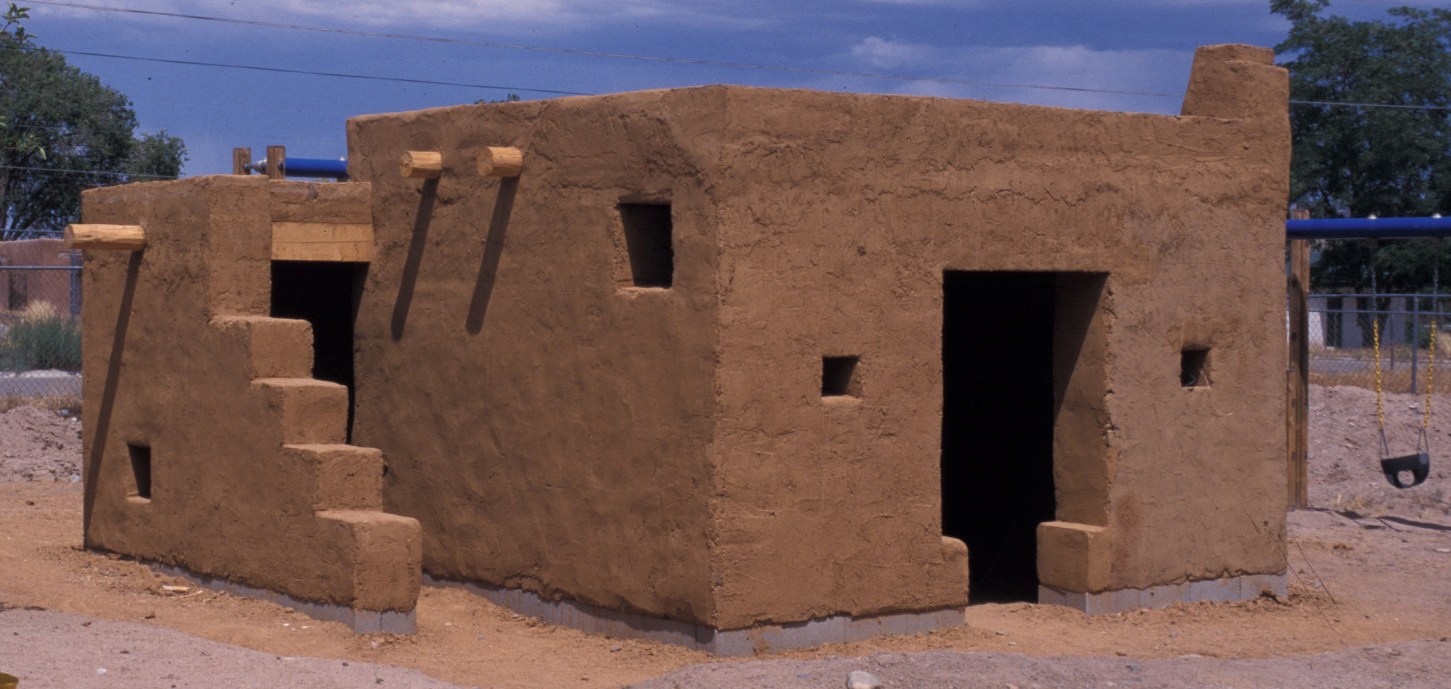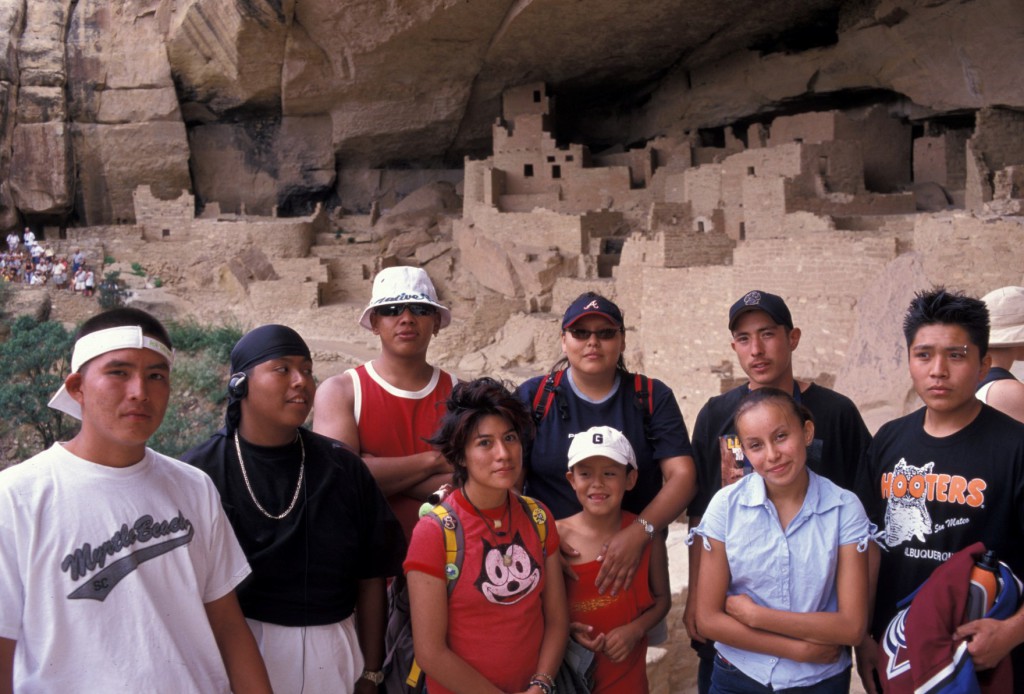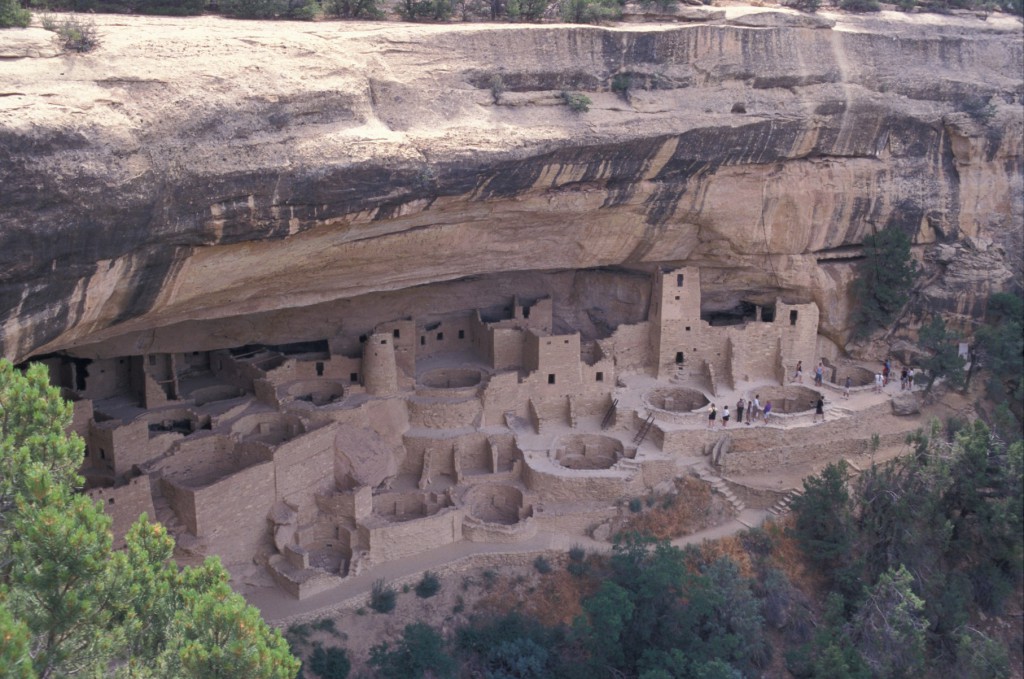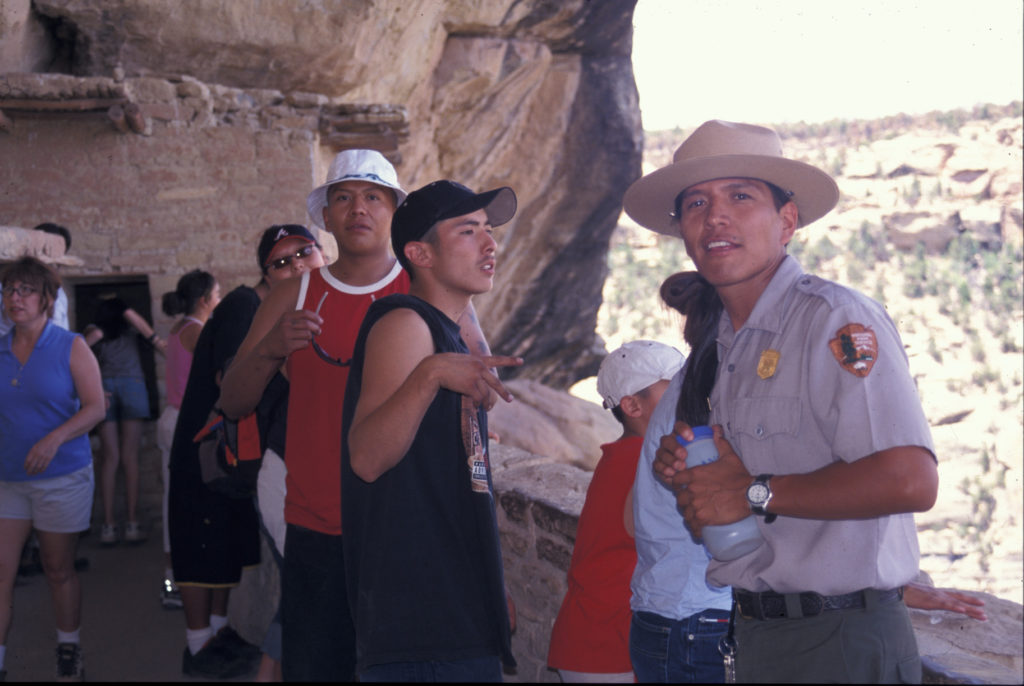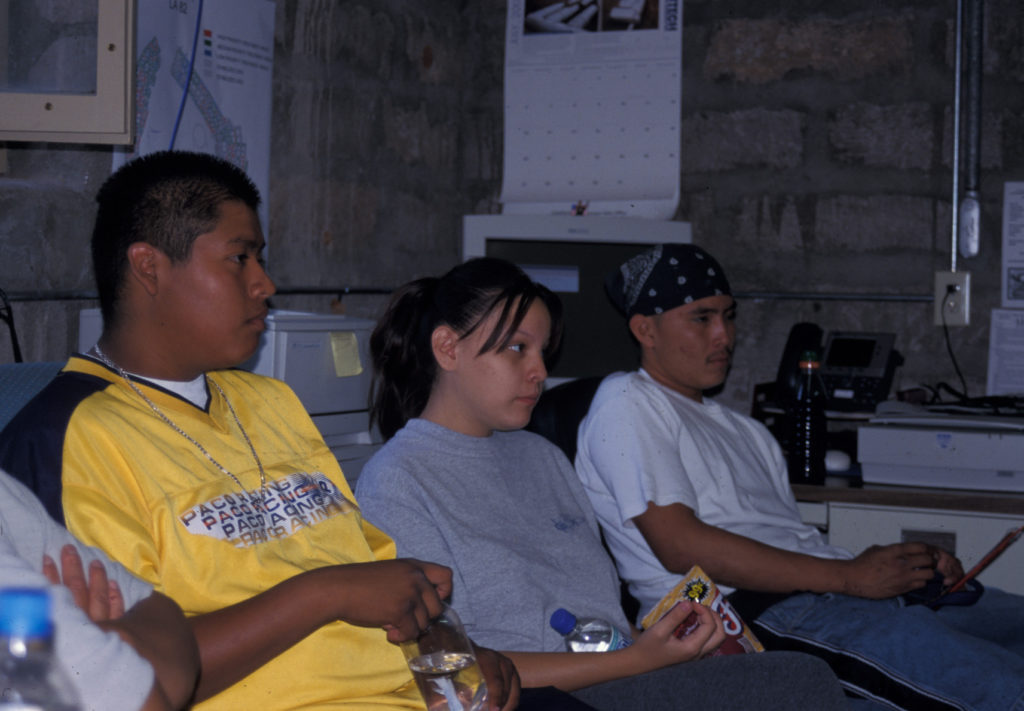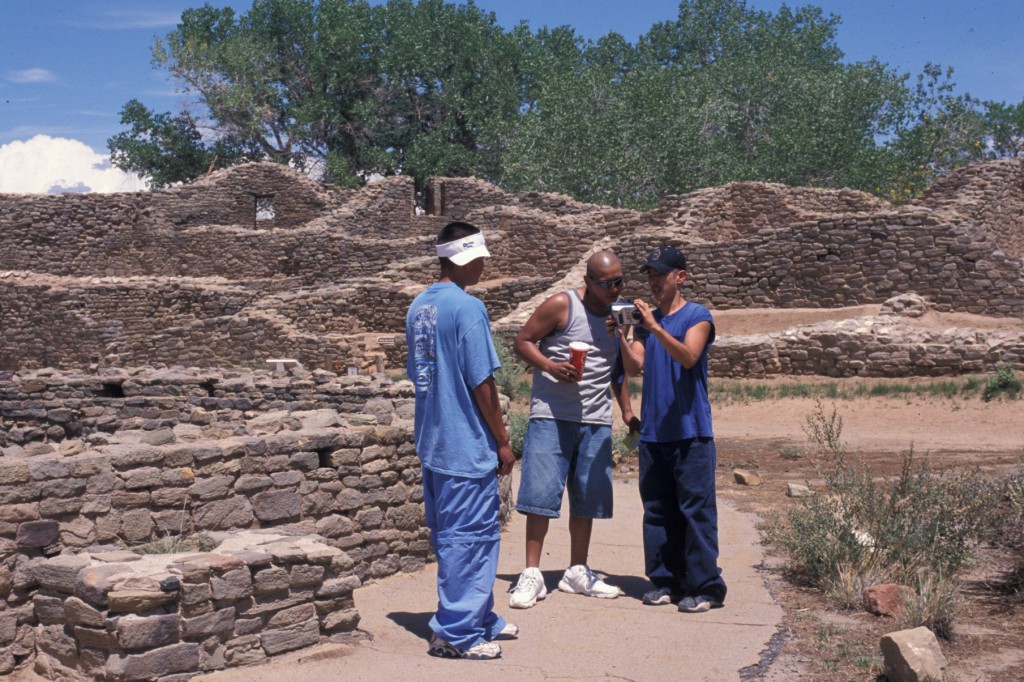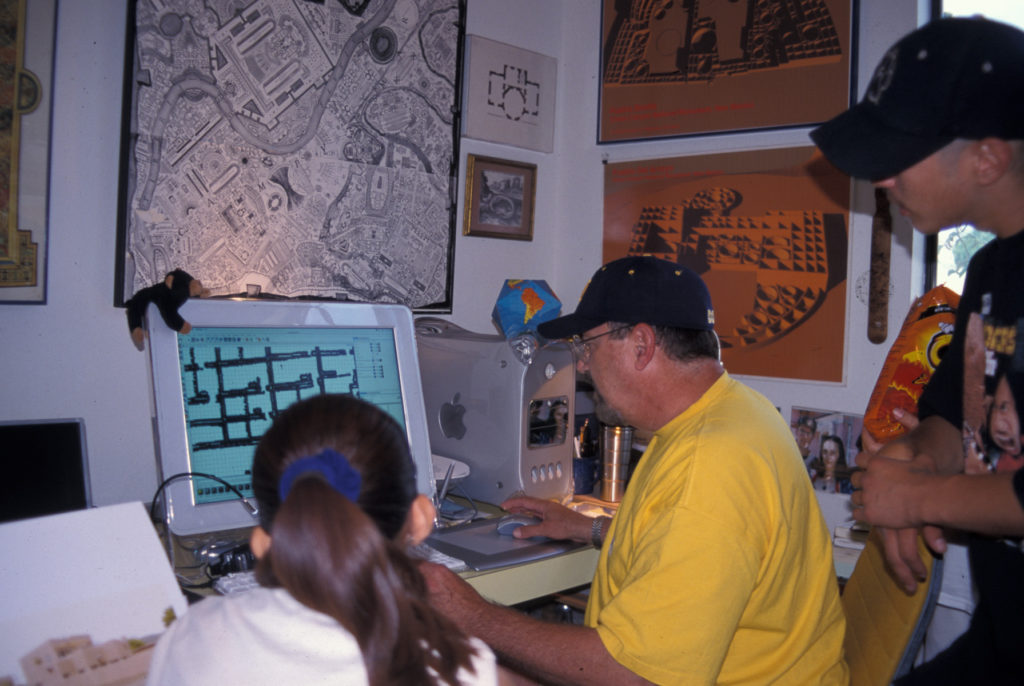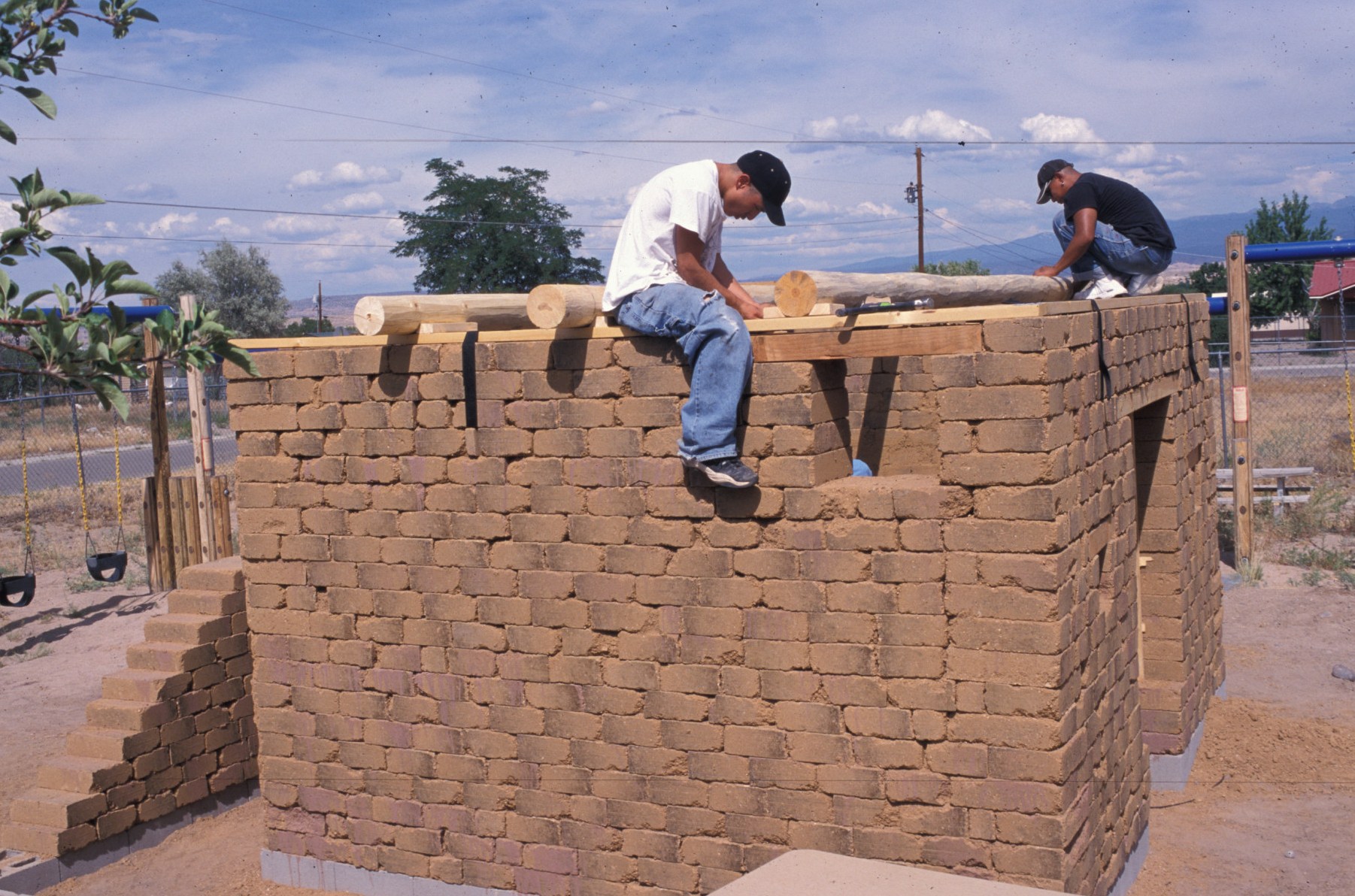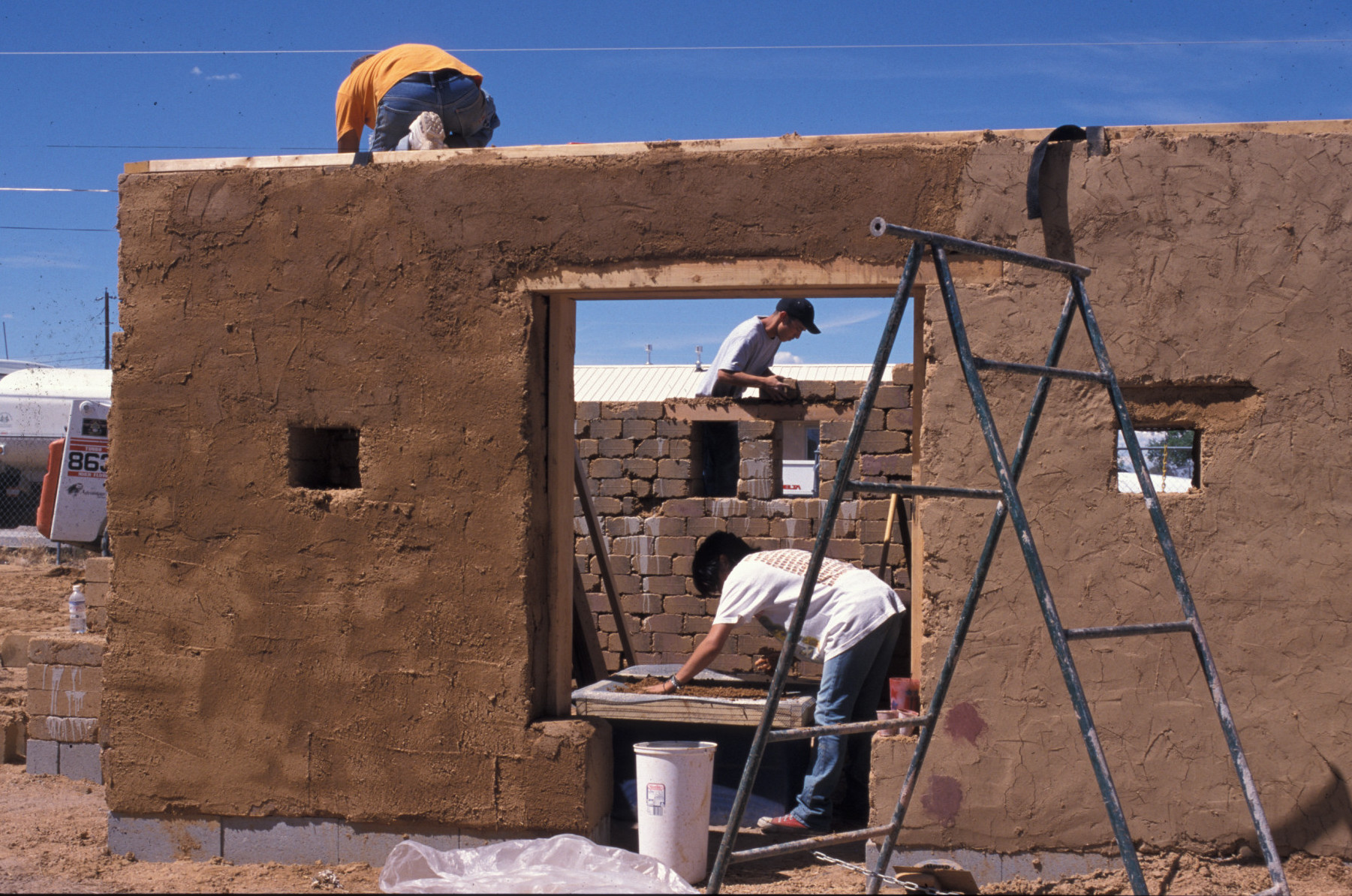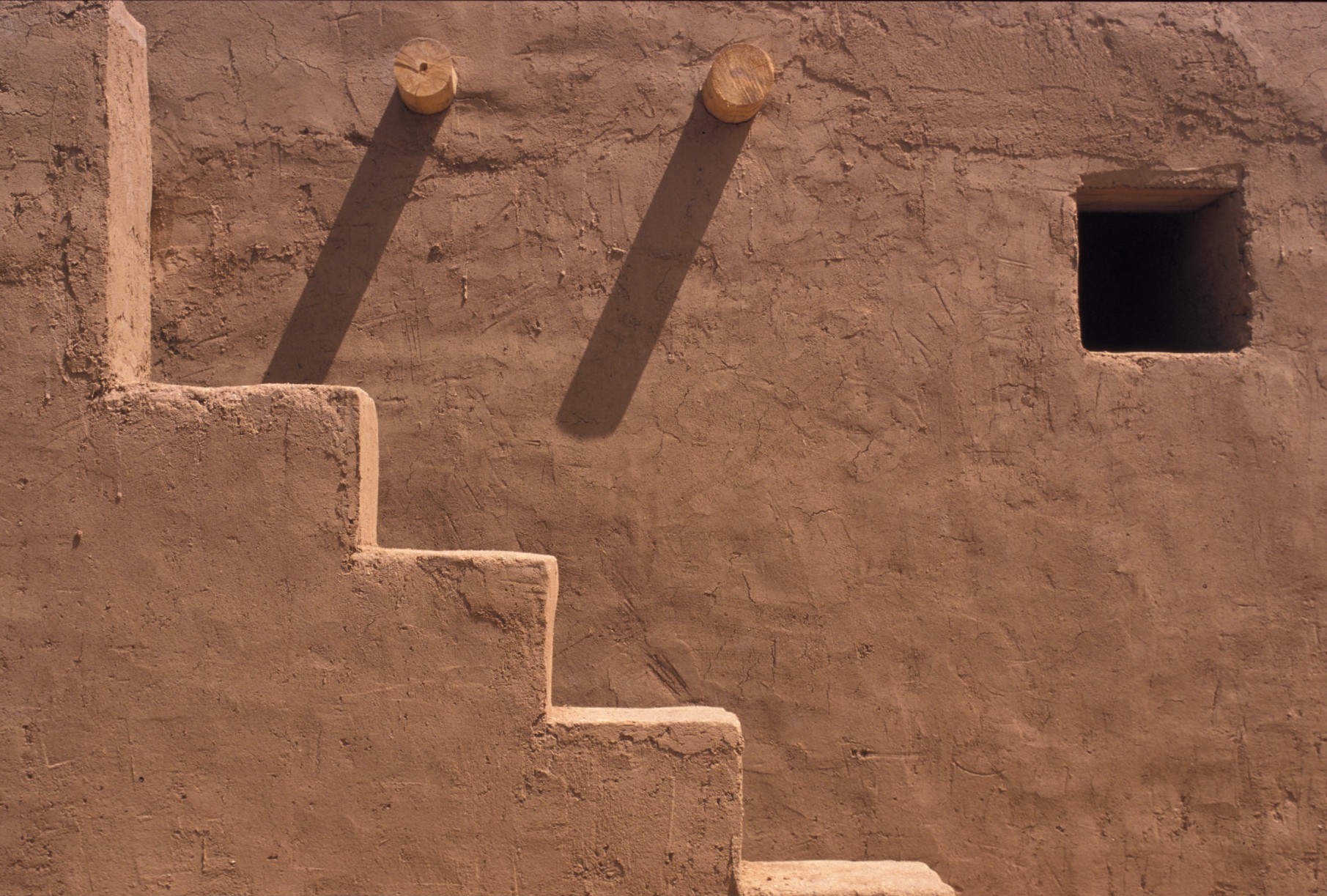Santa Clara Pueblo
Kha‘Po Owingeh, New Mexico, United States
Youth Program for Pueblo Architectural Heritage
The Santa Clara Pueblo are a Tewa speaking people and one of nineteen Pueblo communities in the state of New Mexico, each a sovereign nation. The initiative presented here was implemented in collaboration with the Santa Clara Pueblo tribal authorities, in particular with the Department of Education. Ten Pueblo youth, between the ages of 14 and 23, participated in a summer program during the months of July and August 2003. The objective of the program was to raise awareness among the participants about their rich architectural heritage and expose them to basic skills and know-how which would allow them to eventually become involved in the preservation and promotion of their building traditions. At the same time, it aimed at furthering reflection regarding their present habitat and the kind of physical environment they want to live in in the future. This was pursued through a series of training units and creative exercices, as well as field trips to several ancestral Puebloan archaeological sites.
Most Pueblo youth grow up unaware of the impressive architectural building traditions practiced by their ancestors. Living only a few hours away from world-renowned monuments, the great majority of the participants in our program had never visited any of them before, and many did not even know these places existed. The program included various field visits, among them to Puye, Bandelier, as well as two UNESCO World Heritage Sites, Aztec National Monument and Mesa Verde National Park. At this last site, the youth group spent two days visiting the places built by their forebears and had the opportunity to exchange with park managers and archaeologists, as well as with indigenous interpretive guides. The young could experience firsthand the greatness of their people’s past works, and at the same time they could witness the great level of admiration and respect these masterpieces elicit in the thousands of tourists visiting this site every day.
The group also met with an architect who introduced them to 3-D computer models of Pueblo historic sites and explained how they could convert archaeological data of their own ancestral site at Puye into a digital 3-dimensional model. This technology, and its potential to help “recover” parts of their past left a deep impression on the group.
Furthermore, in order to prompt a discussion about the fate of Santa Clara’s old adobe houses made vulnerable by modernizing development, the program participants used digital cameras to document their favorite buildings and spaces in the Pueblo’s historic area. They also learnt basic architectural graphic skills, especially how to elaborate plans and sections. They then drew plans of their own homes and were encouraged to develop their vision of what their ideal home would look like. Elements of site analysis, use of materials and construction techniques were introduced during this exercise. In addition, the group was presented with basic information about adobe construction and they were shown slides featuring examples of earthen architecture throughout the world.
To channel the obviously high levels of impatience, frustration and rebelliousness which characterized the situation of Pueblo youth, the central activity of the summer program was focused on the design and construction of a small architectural structure, a hands-on experience involving intense physical activity. Back from the tour of the different heritage sites, the young group was fired up about building something inspired by the works of their ancestors. They suggested to the tribal authorities to build a playhouse for the children at the Head Start Program, the local pre-school day care center. The design they conceived for the new structure reintroduced traditional formal elements, some of which they had seen at the archaeological sites. They identified places within the reservation where materials for construction could be found and collected – different kinds of soils for the mud-bricks, grasses for the plaster-mix, and wood for the traditional “vigas” and willow branches for the other roofing elements.
Many community members were thrilled to see the young people so engaged in this task, and supported them with food, materials and their own labor. In this way the work was successfully finished within a few weeks. At the official inauguration of the building, the response of the community to the final result was very positive and several people spontaneously expressed their wish to build their own houses in such a manner, instead of the prefabricated houses most people live in. The successful completion of the traditional building conferred a sense of accomplishment among the young participants and some were encouraged to pursue further training, to go to college to study design or to gain technical expertise in adobe construction. Others became drawn to the Pueblo’s history and started to search and collect old photographs that they hoped would become the foundation for an archive.
The decisive support received from many individuals in the community and from officials of the various departments of the tribal administration was indicative of the level of interest generated by this initiative. The program’s positive progress and its culmination in a concrete outcome were a demonstration of how reconnecting with a forgotten heritage can help heal divisions within a community and how it can inspire and empower a young generation that sometimes feels alienated and frustrated at their inability to change their own living circumstances.
Background
This initiative was designed and implemented by Ernesto Noriega (founding member of OrigiNations) in collaboration with the Governor‘s Office of the Santa Clara Pueblo Tribal Administration and with the institutional support from the University of Pennsylvania, Graduate Program in Historic Preservation, and Bandelier National Monument, National Park Service.

